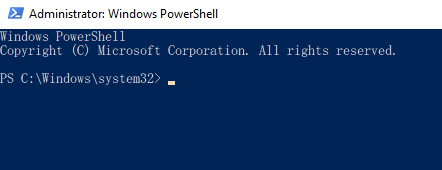

Remove-Item $Destination -Force -ErrorAction Silentl圜ontinue Write-Error "$Destination already exists, please use the Overwrite switch to force overwriting the destination file"

$Destination = $File.FullName -replace ($File.Extension), ("." + $Extension) Same as with the PowerShell command, you can also convert a VHDX to a VHD. Select the new location for your new VHDX. Resize the image to the size given in this parameter. Setting both width and height and also this parameter.
#Windows power shell convert image format iso#
utility for Windows that can convert BIN image format to ISO image format in. Maintain the ratio of the image by setting either width or height. Select the target format in this case VHDX. Ps1 Bin To IsoTo run a game from a disk image in a supported format (. Write-Error "The ImageMagick installation path file you selected does not exist, please (re)install and try again" Start the Hyper-V Manager and click on Edit Disk. $ImageMagick = "C:\Program Files\ImageMagick-7.0.9-Q16\magick.exe" The script is not perfect or anything but it works. The script defaults to a density of 300 and with the extension being PNG but you can change it if you like. Mount-WindowsImage -ImagePath C:\VHDs\BigHomies.vhdx -Path C:\VHDMount -Index 1. The dism can be copied to earlier versions of Windows, provided you have the appropriate version of the windows management framework. This will allow you to run scripts on your computer, but not scripts downloaded from the internet. In the terminal, run the command Set-ExecutionPolicy RemoteSigned. The end result? I did Get-ChildItem C:\path -Filter “*.pdf” | Export-Image and awaaaay we go. This is a simple 2 command Powershell execution, using the dism module. Type PowerShell in the Start Menu search, right-click on the Windows PowerShell icon, and select Run as administrator. Supposing I had a file, try.jpg, in my current directory, here’s how I’d get at the width and the height of that file: image New-Object -ComObject Wia.ImageFile image.LoadFile('pwd\try.jpg') image.Width, image.Height I think this is pretty straightforward way to get at the image properties without having to load up new assemblies. So after doing 1 file I created and programmed the script around to handle input from the pipeline by the FileInfo object so that you could use Get-ChildItem as input recursively if you wanted that. So after a while I switched to ImageMagick and it ended up being pretty straight forward as well as delivering very nice compression results. However I didn’t get the results I wanted mostly because of my experience with it. To get this done I started with experiments with GhostScript. I needed it mostly for compression purposes.
#Windows power shell convert image format pdf#
Recently I had a lot of PDF files that I needed to convert to images.


 0 kommentar(er)
0 kommentar(er)
